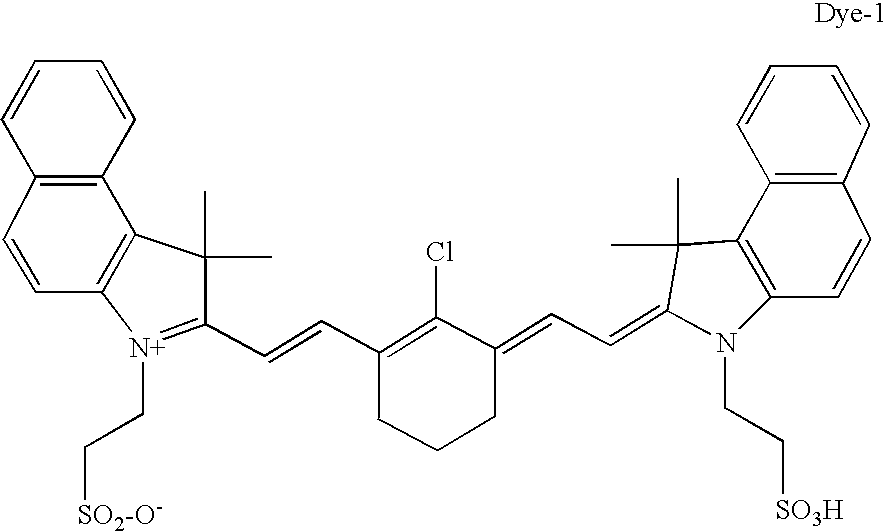Method of making a heat-sensitive lithographic printing plate
a lithographic printing plate and heat-sensitive technology, applied in the field of making lithographic printing plates, can solve the problems of difficult to clean out non-image parts, difficult to develop parts contaminated by ink in the on-press processing step, and difficult for the end-user to avoid that the plate surface gets in touch with ink (or with inked parts), etc., to achieve the effect of improving the cleaning
- Summary
- Abstract
- Description
- Claims
- Application Information
AI Technical Summary
Problems solved by technology
Method used
Image
Examples
invention examples 1 and 2
[0079]The same printing plate precursor on the same support as described in the Comparative example 1 was exposed and on-press processed in the same way as described in the Comparative example 1, with the exception that, after imaging exposure and before the on-press processing step, the coating of the plate precursor was sprayed with the RC520 solution, commercially available from AGFA, in an amount of 5.5 ml / m2 for the INVENTION EXAMPLE 1 and 11 ml / m2 for the INVENTION EXAMPLE 2. The RC520 solution is an aqueous solution of the surfactant DOWFAX 3B2 in a concentration of 39.3 g / l, citric acid.1aq in a concentration of 9.8 g / l, and trisodium citrate.2aq in a concentration of 32.6 g / l, and the RC520 solution has a pH-value of about 5. Immediatly after spraying, the plate was dried by means of the heating element of the Heights Clean Out Unit of the press. The same method as described in the Comparative Example 1 was carried out for the on-press processing of the plate. We observed t...
PUM
| Property | Measurement | Unit |
|---|---|---|
| thickness | aaaaa | aaaaa |
| thickness | aaaaa | aaaaa |
| distance | aaaaa | aaaaa |
Abstract
Description
Claims
Application Information
 Login to View More
Login to View More - R&D
- Intellectual Property
- Life Sciences
- Materials
- Tech Scout
- Unparalleled Data Quality
- Higher Quality Content
- 60% Fewer Hallucinations
Browse by: Latest US Patents, China's latest patents, Technical Efficacy Thesaurus, Application Domain, Technology Topic, Popular Technical Reports.
© 2025 PatSnap. All rights reserved.Legal|Privacy policy|Modern Slavery Act Transparency Statement|Sitemap|About US| Contact US: help@patsnap.com

